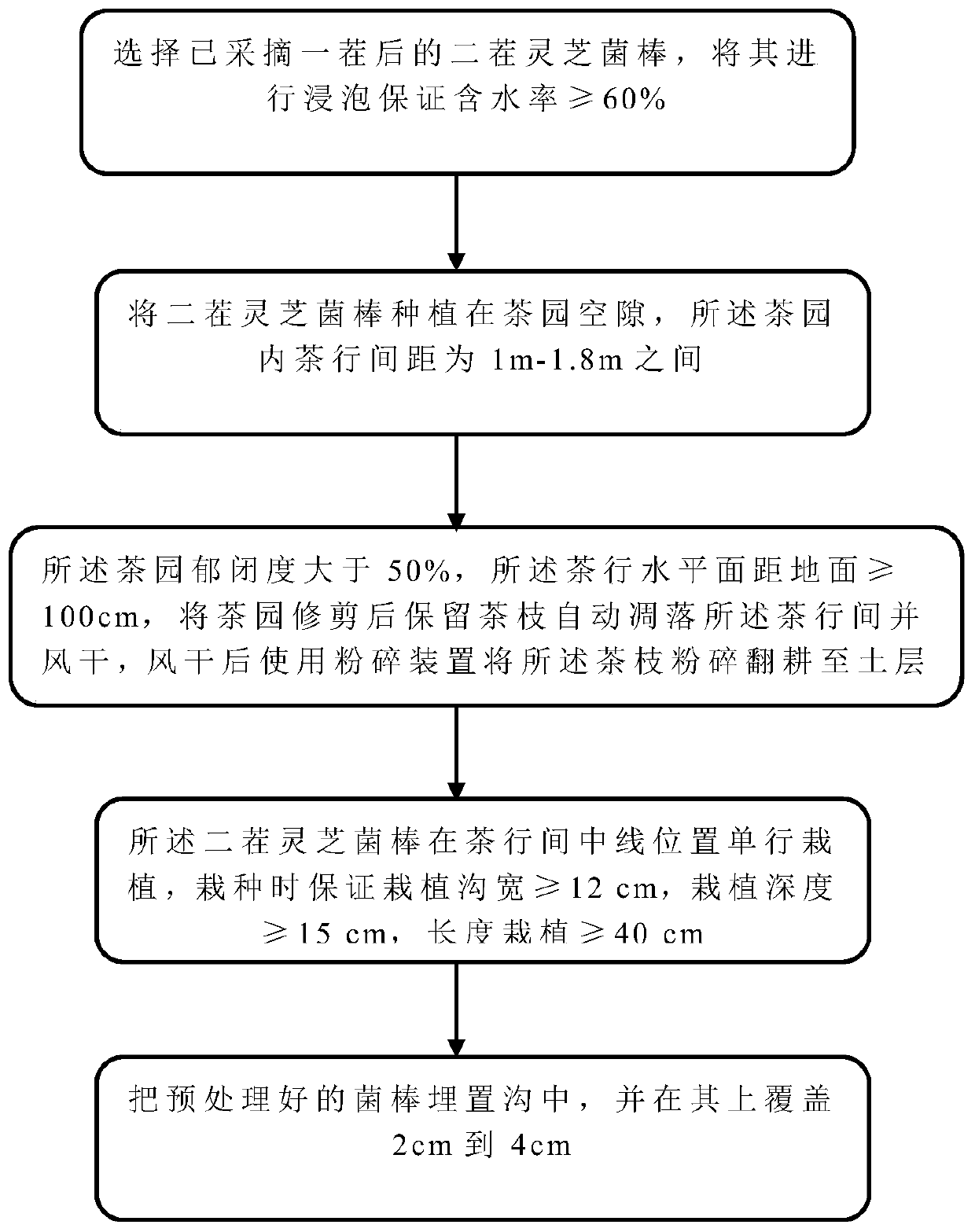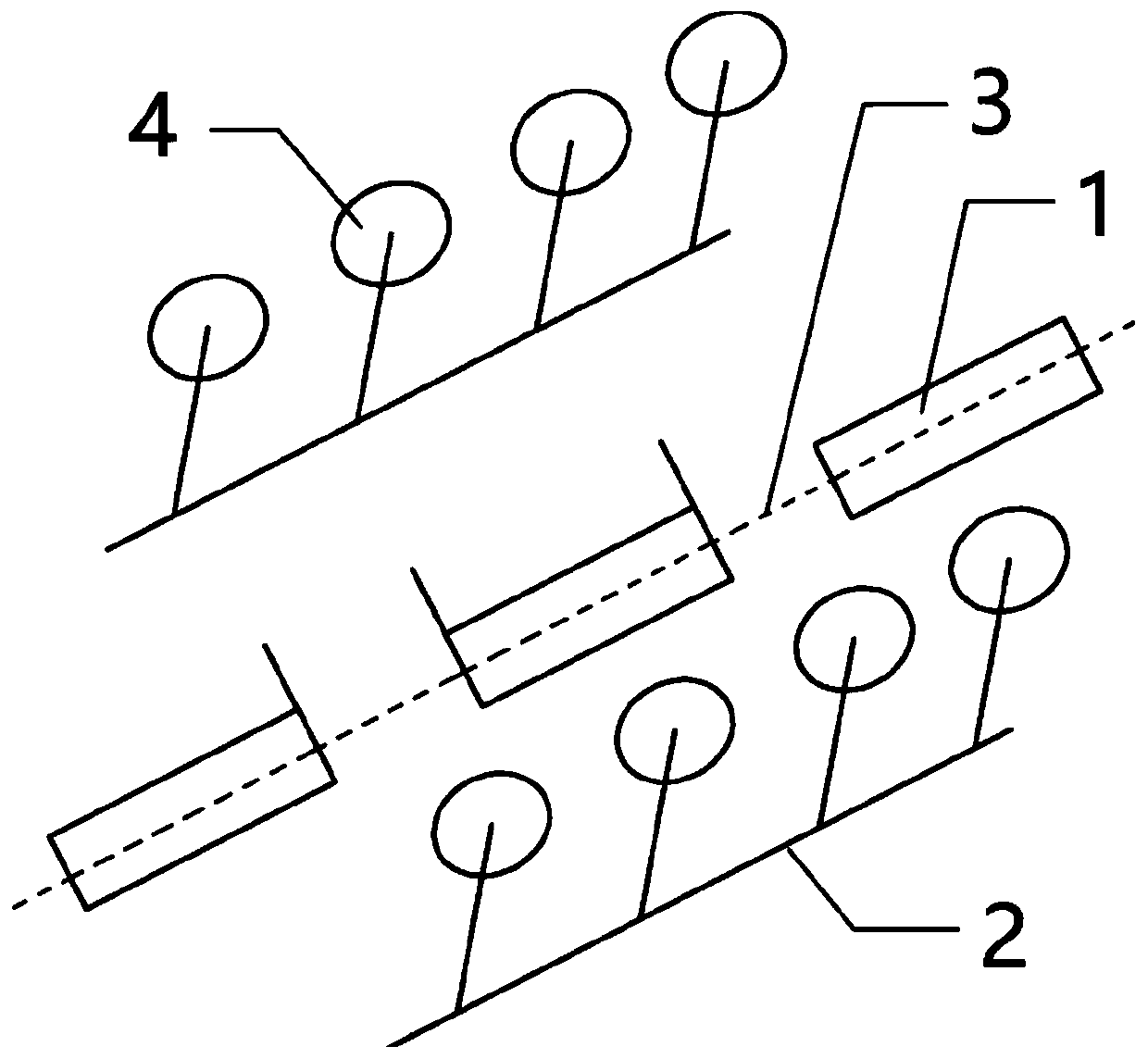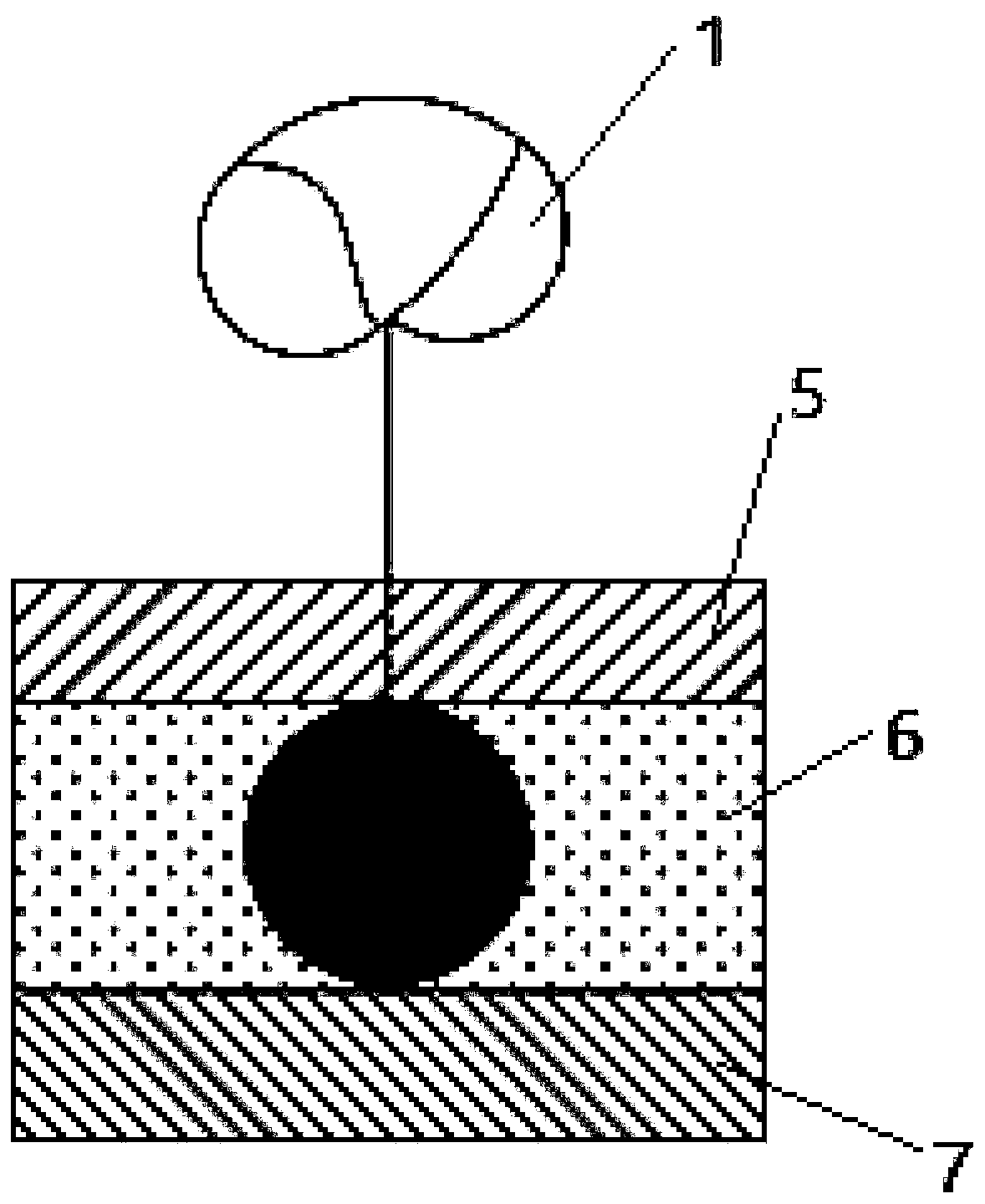Secondary cultivation method capable of utilizing tea tree pruned branches and leaves in situ for tea garden ganoderma lucidum
A tea tree pruning and cultivation method technology, applied in cultivation, plant cultivation, mushroom cultivation, etc., can solve the problems of reduced yield of ganoderma lucidum, high production cost, waste, etc., and achieve the effect of supplementing soil organic matter and increasing comprehensive yield
- Summary
- Abstract
- Description
- Claims
- Application Information
AI Technical Summary
Problems solved by technology
Method used
Image
Examples
Embodiment 1
[0023] Please refer to figure 1 , a flow chart of a method for secondary cultivation of Ganoderma lucidum in tea gardens in situ utilizing pruned branches and leaves of tea trees according to the present invention, comprising the following steps: selecting the second crop of Ganoderma lucidum sticks 1 after one crop has been picked, soaking it to ensure that the water content is ≥ 60% ; Plant the second crop of Ganoderma lucidum sticks 1 in the gap 3 of the tea garden. Please refer to figure 2 , the tea garden intercropping Ganoderma lucidum cultivation schematic diagram of tea garden intercropping Ganoderma lucidum secondary cultivation method utilizing in-situ pruned branches and leaves of tea trees according to the present invention, the tea row 2 spacing in the tea garden is between 1m-1.8m; the canopy density of the tea garden is greater than 50% , the horizontal plane of the tea row 2 is ≥ 100cm from the ground, and after the tea garden is pruned, the tea branches 4 ar...
Embodiment 2
[0033]The 30-year-old Meizhan (variety) tea garden is selected for the tea garden, and the distance between two tea rows is 1m; the canopy density of the tea garden is not less than 90%, and the height of the tea trees is 1.30m. Tea garden pruning and plowing: The tea garden was pruned in November of that year, and the level of pruning was about 14cm from the top. After pruning, the 4 leaves of the tea branches were automatically littered in 2 tea rows. After 60-70 days of natural drying, the branches and leaves were crushed with a small tiller Plow to the soil layer, the depth is ≥15cm. Pretreatment of waste Ganoderma lucidum sticks: Ganoderma lucidum cultivation: use pruned and mowed tea branches 4 to cultivate Ganoderma lucidum, cultivate around August 10 every year, fill the bag around September 20, the original base grows, and enter the mature period after 60 days . Soak the second crop of Ganoderma lucidum sticks 1 after harvesting and soaking in water for 1-2 hours. Th...
Embodiment 3
[0035] The 20-year-old Fuding Dabai (variety) tea garden was selected as the tea garden. The distance between the two tea rows is 1.2m; the canopy density of the tea garden is about 80%, and the height of the tea trees is 1.1m. Tea garden pruning and plowing: The tea garden was pruned in July of that year, and the pruning level was about 10cm from the top. After pruning, the 4 leaves of the tea branches were automatically littered in 2 tea rows. After 50-60 days, they were naturally dried in the sun. Crush and plow to the soil layer, the depth is ≥15cm. Pretreatment of discarded Ganoderma lucidum sticks: Ganoderma lucidum cultivation: use pruned and mowed tea branches 4 to cultivate Ganoderma lucidum, cultivate in April every year, and harvest in May-June. Soak the second batch of Ganoderma lucidum sticks 1 after harvesting and soaking in water for 2-3 hours, and the moisture content of the sticks should not be lower than 60%. After soaking in water from the mushroom house, tr...
PUM
 Login to View More
Login to View More Abstract
Description
Claims
Application Information
 Login to View More
Login to View More - R&D Engineer
- R&D Manager
- IP Professional
- Industry Leading Data Capabilities
- Powerful AI technology
- Patent DNA Extraction
Browse by: Latest US Patents, China's latest patents, Technical Efficacy Thesaurus, Application Domain, Technology Topic, Popular Technical Reports.
© 2024 PatSnap. All rights reserved.Legal|Privacy policy|Modern Slavery Act Transparency Statement|Sitemap|About US| Contact US: help@patsnap.com










